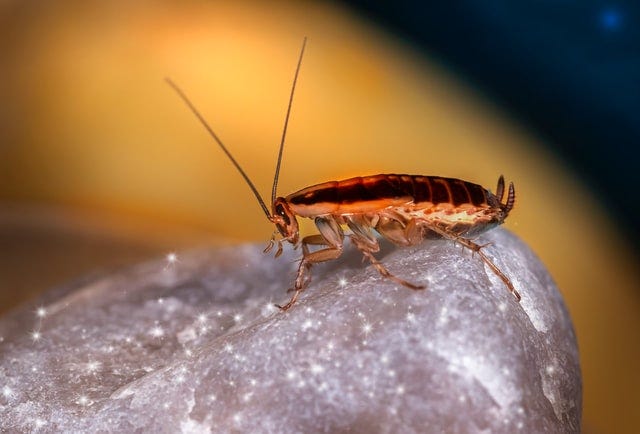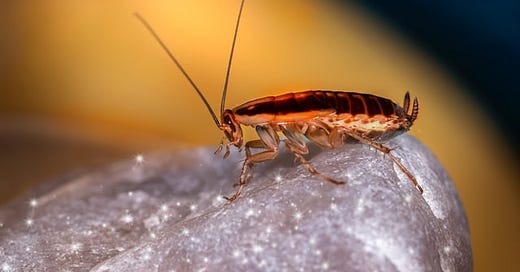The weird and wonderful world of an entomologist
Jou Heng of PestBusters Singapore enters the realm of insects and household pests
I’ve been thinking a lot about bugs, insects and small animals lately – mostly because I encounter them so much inside and outside the house, as we have a garden and a forest-y backyard.
Ants in all shapes, colours and sizes. Spiders, too. Snails. Butterflies and moths. Dragonflies (pretty).
And then you have the cockroaches. You also have to be extra-vigilant about ticks (I have dogs) and mosquitoes. Yikes.
But I have to admit, there’s something strangely admirable about these last three’s strength, longevity and survival skills (especially the cockroach’s). They’re tough to totally get rid of.
Because we do mostly want to get rid of them (at least the cockroaches, ticks, mosquitoes, and the like). They’re considered household pests, after all.
I wonder what it’s like to study them – insects in particular.
Well... “Entomology is the study of insects,” begins Jou Heng, the resident entomologist of PestBusters Singapore, “and there are over one million insect species in the world.
“Even though entomologists study all groups of insects, most of us focus more on certain groups of insects only,” he adds. “For me at PestBusters, I focus more on insect-pests that are commonly found in urban environments, such as cockroaches, ants, flies, mosquitoes, termites, bed bugs, etc.”
It sounds like we’re both on the same page – and I’m on the right track.
“Entomologists in the pest management industry do not only study and understand the biology and behaviours of insect-pests, but most importantly they apply this knowledge to provide the best solutions to any pest issue encountered by clients.”
Before insects and entomology
Jou Heng was actually enamoured with butterflies. “I started to love insects the day I visited a butterfly farm in secondary school,” he admits.
“I was amazed by the beauty of the different species of butterflies. Since then, I started to get curious with not only butterflies, but other types of insects as well. The more I studied about them, the more I got fascinated by them.”
He’s since discovered other interesting details about them as well. For example: “Insects are a very successful group of animals. Even though their sizes are very small, they have been around for more than 400 million years (which is even before dinosaurs ever existed!).
“While dinosaurs went extinct 66 million years ago, insects still remain nearly invincible today,” he declares.
You don’t say
It simply means that Jou Heng has a lot of work to do (and probably will never run out of work to do). Aside from the insects and pests mentioned above, PestBusters Singapore also deals with fleas, bees, flies, wasps, rodents and more.
The company offers customised Integrated Pest Management Programmes for residential and commercial spaces such as healthcare facilities, F&B outlets, offices and other properties. They also specialise in fumigation, pest management and control, among others, as well as applications like video and digital recordings, and GPS tracking systems.
“For my profession in PestBusters, I pay more attention to insects that are normally found in urban environments,” he reiterates. “Some of the insects, such as booklice, gnats or stored-product pests, can be very tiny and cannot be easily seen with the naked eye.
“However, with the use of a microscope, any tiny part of the insect’s body can be observed easily and clearly,” he continues. “Some of them are very beautiful indeed! Up till today, there are more than hundreds of insect specimens collected in our PestBusters R&D Training Centre.”
It’s definitely riveting
And exciting. But hold your horses. Of course there are certain aspects of the job – intriguing though as it is – that will still make you pause or take you aback. Or did you forget?
“If you want to be an entomologist and study insects, you need to be comfortable in natural surroundings and dirty environments,” Jou Heng says. “Many kinds of insects – like flies and cockroaches – breed in unhygienic places such as bin chutes, manholes and drainages. In order to study or find out the exact locations of their breeding source, being around these conditions is unavoidable.”
And with that, we’re brought right back down to earth. Hopefully Jou Heng can rekindle our interest with his “favourite” insects – those that continue to astound him throughout his studies, and those that deserve to be given a chance to tell their stories, so to speak.
#1 The termite
“One thing that amazes me is how fast termites reproduce. One termite queen produces one egg every three seconds, which is around 30,000 eggs per day, or more than 10 million eggs per year! Not to mention each termite queen can live for more than 25 years!”
#2 The cockroach
“Even though I hate cockroaches just like most people, I cannot deny the fact that they have very powerful surviving abilities. Cockroaches can even survive being submerged under water for half an hour! Nevertheless, certain species of cockroaches, such as the Madagascar hissing cockroach, are very beautiful and considered as pets.”

So squash that instinct
The one that urges you to kill any insect immediately, that is. Well, maybe not before looking into proper household habits that can help us handle them responsibly and humanely – and stop infestations from happening in the first place.
“Even though spraying chemicals to kill pests is a common practice, maintaining good sanitation and preventing pest entry are two important aspects of a successful pest management programme,” Jou Heng suggests.
“Pests are usually found in areas with food, water and shelter. If we can prevent or reduce the presence of these three sources, pests will less likely be around.”
Or we can just rely on a pest management programme from the experts, like PestBusters Singapore. Because I don’t think a pest’s reputation (and our course of action) will change anytime soon (even if a part of me thinks that a “pest” is just doing what it was born or meant to do). They can and do end up wreaking havoc.
“(The word) ‘pest’ is defined by human needs and values. It may change with time and space,” Jou Heng muses.
“Today, we may think that termites are pests. However, if one day humans only live in buildings that are made of glass or stainless steel, termites will no longer be considered as pests because they will not invade such building materials.”
Well then (and until then), I’ll try not to get carried away while observing and wondering about them. And figuring out the best way to treat them.
For more on PestBusters Singapore, go to their site, Facebook, YouTube and Instagram.





